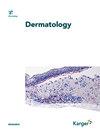皮肤科诊所产生的电子废物分析。
IF 2.7
3区 医学
Q2 DERMATOLOGY
引用次数: 0
摘要
背景:医疗废物严重影响环境并助长气候变化。虽然医疗废物对环境的影响有据可查,但由于医疗设备的快速更新、新技术的应用以及皮肤科办公设备废物的影响,电子废物(电子废物)对皮肤科的影响往往被忽视。摘要:在本文中,我们描述了皮肤科诊所医疗废物的各种来源,估计了皮肤科产生的电子废物的数量和临床碳足迹,并提出了回收废物的解决方案,以减轻与不良废物管理做法相关的环境和人类健康风险。关键信息:在皮肤科诊所采用回收计划,旨在最大限度地减少电子废物,这是一个多步骤的过程,包括:(a)对电气废弃部件进行分类;(b)对危险材料进行预处理以便清除;(c)拆除设备以便回收或处置材料;(d)处理材料以便中和和处置危险剂;(e)回收具有保留效用的元件和装置;(f)处置不可回收的或危险的物品以便销毁或丢弃。虽然朝着环保产品设计的方向逐渐发展,但在此期间,建立注重健康的行业标准和认可负责任的废物管理做法至关重要,以减少皮肤科诊所和整个医疗保健足迹对电子废物的健康和环境影响。本文章由计算机程序翻译,如有差异,请以英文原文为准。
An Analysis of the Electronic Waste Produced by Dermatological Clinics.
求助全文
通过发布文献求助,成功后即可免费获取论文全文。
去求助
来源期刊

Dermatology
医学-皮肤病学
CiteScore
6.40
自引率
2.90%
发文量
71
审稿时长
1 months
期刊介绍:
Published since 1893, ''Dermatology'' provides a worldwide survey of clinical and investigative dermatology. Original papers report clinical and laboratory findings. In order to inform readers of the implications of recent research, editorials and reviews prepared by invited, internationally recognized scientists are regularly featured. In addition to original papers, the journal publishes rapid communications, short communications, and letters to ''Dermatology''. ''Dermatology'' answers the complete information needs of practitioners concerned with progress in research related to skin, clinical dermatology and therapy. The journal enjoys a high scientific reputation with a continually increasing impact factor and an equally high circulation.
 求助内容:
求助内容: 应助结果提醒方式:
应助结果提醒方式:


